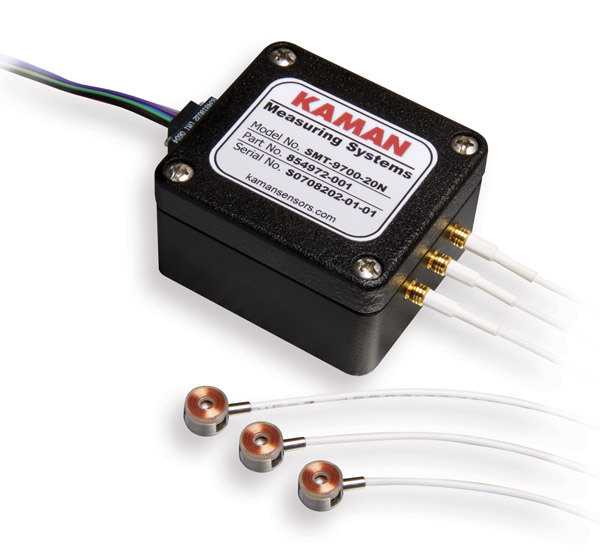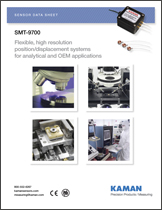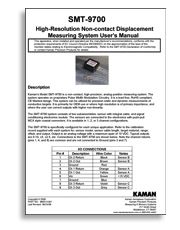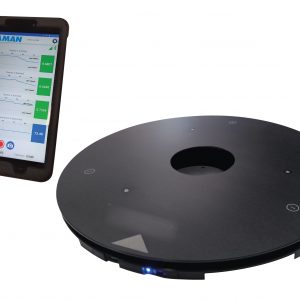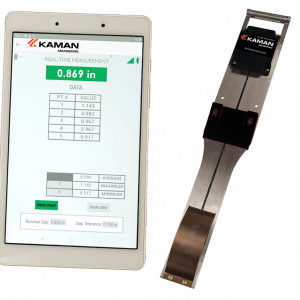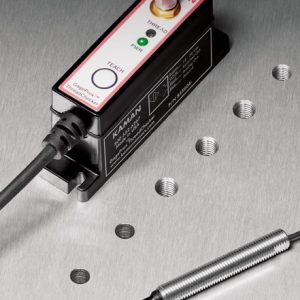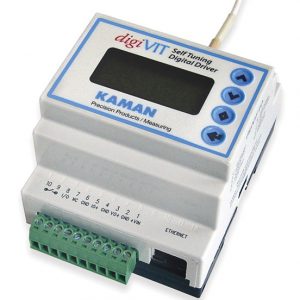SMT-9700
Flexible, high-resolution position/displacement systems for OEM applications
- 1, 2 and 3 channel configurations
- Nanometer to sub-nanometer resolution
- Easy, cost-effective performance customization
- CE and RoHS compliant
- Small package size
- Thirteen standard sensor options
| Electronics | IGS format | STEP format |
|---|---|---|
| SMT-9700 | IGS | STEP |
| Sensor | IGS format | STEP format |
|---|---|---|
| 2U sensor | IGS | STEP |
| 15N sensor | IGS | STEP |
| 1U1 sensor | IGS | STEP |
| 5U sensor | IGS | STEP |
| 20N sensor | IGS | STEP |
| 9U sensor | IGS | STEP |
| 3U1 sensor | IGS | STEP |
| 12U sensor | IGS | STEP |
| 16U sensor | IGS | STEP |
| 6U1 sensor | IGS | STEP |
| 26U sensor | IGS | STEP |
| 38U sensor | IGS | STEP |
| 51U sensor | IGS | STEP |
SMT-9700 GENERAL SPECS
With the performance and flexibility built into the SMT-9700, system specifications are application dependent.
| Electronics temperature | Operating range 0° to 70°C (32° to 158°F) Storage range -40° to +85°C (-40° to 185°F) Compensation range 15° to 55°C (59° to 131°F) |
| Analog output | Continuous load current <20 ma Short circuit/overload protection Yes |
| Input | Supply voltage required 15 to 30 Vdc Current limit (no load current input) <50 ma Reverse polarity protection Yes Short circuit protection Yes |
KAMAN SMT-9700 SENSORS
| SENSOR click to view | STANDARD MEASURING RANGE | TARGET MATERIAL | ||
|---|---|---|---|---|
| inch | mm | non-fer† | ferrous | |
| 2U** | 0.020 | 0.5 | • | |
| 15N** | 0.035 | 0.9 | • | |
| 1U1** | 0.040 | 1.0 | • | |
| 5U** | 0.050 | 1.3 | • | |
| 20N** | 0.075 | 1.9 | • | |
| 9U* | 0.100 | 2.5 | • | |
| 3U1** | 0.120 | 3.0 | • | |
| 12U* | 0.160 | 4.0 | • | • |
| 16U* | 0.200 | 5.0 | • | • |
| 6U1** | 0.240 | 6.0 | • | • |
| 26U* | 0.320 | 8.1 | • | • |
| 38U* | 0.500 | 12.7 | • | • |
| 51U* | 0.600 | 15.0 | • | • |
Reference Sensors Data Sheet for dimensional information.
* Operating temperature cryogenic to +400°F (+200°C), sensor dependent
** Operating temperature -67° to +220°F (-55° to +105°C)
† Non-ferrous target material is recommended for best performance. Ferrous targets are not recommended for small sensors. Contact Kaman for applications assistance if considering ferrous target material.
SMT-9700 non-contact linear proximity/displacement measuring system
Kaman Precision Products
Measuring & Memory Systems
217 Smith Street
Middletown, CT 06457
USA
Telephone 860-632-1000
Fax 860-632-4515
Council Directive 89/336/EEC as amended by Council Directive 92/31/EEC (EMC Directive)
AND
Council Directive 73/23/EEC as amended by Council Directive 93/68/EEC (LVD Directive)
EN 61326: 2005 Electrical Equipment for Measurement, Control and Laboratory Use – EMC Requirements
EN 55011: 2003 Limits and Methods of Measurement of Radio Disturbance Characteristics of Industrial, Scientific and Medical (ISM) – Radiated Emissions Requirements
EN 61010-1:2001 The SMT-9700 unit requires the use of a limited energy power supply circuit per EN 61010-1:2001 Article 9.3. The SMT-9700 does not use or switchvoltages in excess of 60 VDC or 42.4 VAC peak (30 VAC rms).
Many options are available to customize a standard system to meet the exact needs of the application. The most popular are:
Most sensors can handle longer cable lengths, although increasing the cable length can and will affect some performance specifications. Shorter than standard cable lengths are also available. Call an apps engineer to discuss your particular requirements.
Many sensors come with integral sensor cables. Routing this cable in some applications is difficult and something you only want to do once. Including an in-line connector splice in the cable, near the sensor itself, allows for easy sensor replacement should the need arise.
Some applications pass the sensor through a pressure boundary, most commonly a vacuum chamber wall. We offer an in-line hermetic bulkhead splice for these applications.
Standard published ranges are based on meeting a set of performance specs. Custom calibrations are possible to meet specific application needs. Contact a Kaman applications engineer if a custom calibration is desired.
Unless otherwise specified, nonferrous systems will be calibrated with an aluminum target, ferrous systems will be calibrated with a 4130 steel target. If your target material is significantly different in conductivity and/or permeability it may be best to calibrate using the same material as your target.

